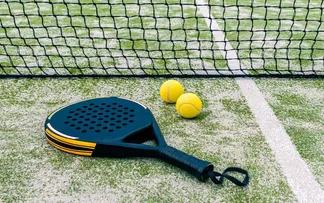

Building a Padel Court Crafting the Perfect Playing Space
Padel, an exciting blend of tennis and squash, has been gaining immense popularity worldwide. As this sport continues to thrive, the demand for quality padel courts is on the rise. For those looking to invest in building a padel court, understanding the factory process that goes into crafting these courts is essential. In this article, we will explore the various aspects of padel court construction and the importance of quality and precision in the factory setting.
Understanding Padel Courts
A standard padel court measures 20 meters long and 10 meters wide, enclosed by walls that are usually made of glass and other materials such as concrete or steel. The surface of the court typically consists of artificial grass or acrylic material, designed to provide optimal gameplay conditions. With its unique layout and rules, every component of a padel court must be meticulously designed and constructed to enhance the playing experience.
The Role of Padel Court Factories
The process of building a padel court begins at the factory. Here, specialized manufacturers use cutting-edge technology and high-quality materials to create the various components of the court. Factories dedicated to padel court construction harness expertise in engineering and design, ensuring that every element meets the regulatory standards set by the International Padel Federation (FIP).
One of the first steps in the factory is the production of the structural framework. This includes the metal tubing that supports the glass walls and the floor. Manufacturers opt for durable materials, such as galvanized steel, which can withstand the elements while maintaining structural integrity. This durability is crucial, considering that padel courts are often installed in outdoor settings.
Surface Generation
The next essential element in the production process is the court surface. The flooring must provide excellent traction and be suitable for players to perform their best. In quality factories, the surface materials are chosen for their performance characteristics. For example, artificial grass surfaces are designed with specific pile heights and densities to optimize ball bounce and provide a comfortable experience for players. Furthermore, weather-resistant materials are vital for outdoor courts to ensure safety and longevity.

Quality Control
Quality control is paramount in the manufacturing process. Before components are shipped out for installation, they undergo rigorous testing to ensure they meet safety and performance standards. These tests might include checking for structural stability, surface adhesion, and weather resistance. Feedback loops between manufacturers and courts' end users lead to continuous improvements in the products offered, a commitment to excellence that defines leading padel court factories.
Installation Process
Once all components are ready, the installation process begins. Professional installers, often trained by the manufacturers, ensure that every aspect of the court is set up correctly. This phase is critical, which requires precision, as even minor errors can affect gameplay. The installation team carefully constructs the framework, precisely positions the glass walls, and lays the court surface. Attention to detail during installation guarantees that the court will not only look good but also enhance the overall playing experience by conforming to regulation dimensions and specifications.
The Future of Padel Courts
As the sport grows, advancements in technology and materials continue to evolve. Future padel court factories are likely to explore new materials that are not only more durable but also environmentally friendly. Sustainable practices are becoming increasingly important, and manufacturers are beginning to adopt eco-friendly materials and processes.
Additionally, as the game's popularity spreads, there will be an increasing demand for customized courts. Factories capable of delivering personalized elements—such as branding, unique color schemes, and innovative designs—will become highly sought after.
Conclusion
Building a padel court is a multifaceted process that involves skilled craftsmanship, quality materials, and precise engineering. The factories dedicated to this work play a vital role in the growth and development of the sport. As padel continues to capture the hearts of sports enthusiasts, investing in quality courts will ensure that players experience the best possible conditions, paving the way for future champions. Whether for personal use or commercial facilities, choosing the right factory for padel court construction is crucial for creating a lasting legacy in the world of padel.
High-Performance Industrial Flooring Solutions China Paddle Tennis Court for Sale
High-Performance Industrial Flooring Solutions Durable & Cost-Effective
Homogeneous Transparent Floor – Durable & Stylish Rubber Floor Solutions
Premium Homogeneous Transparent Floor for Durable & Stylish Spaces Rubber Floor Solutions
Premium Sports Floor Solutions Durable PVC Sports Floor & Rubber Floor for Gyms
Durable Rubber Composite Floor Premium Rubber Floor & Mats Solutions